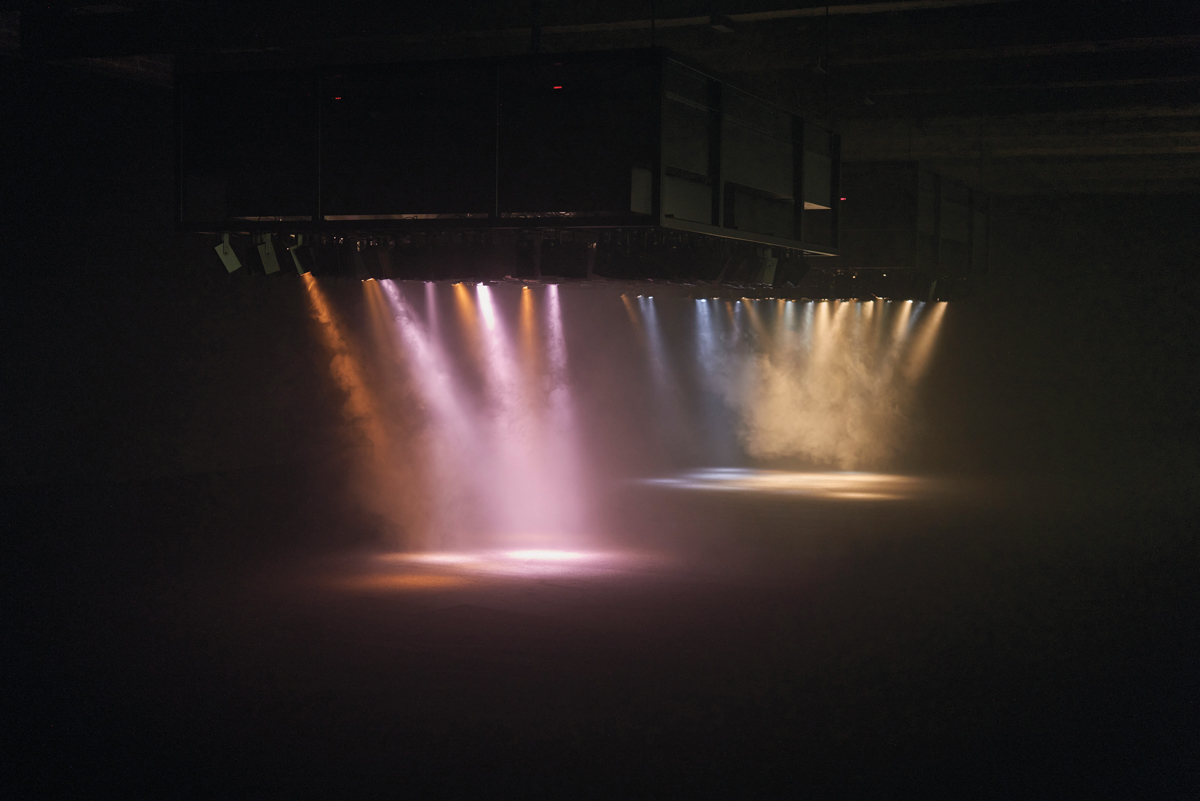

At a moment of growing anxiety about AI’s potential to usurp and overwhelm human intelligence, Pierre Huyghe offers neither reassurance nor prophecy of catastrophe. Instead, he proposes to take human consciousness out of the equation altogether. “Liminal,” an exhibition at the Pinault Collection’s Punta della Dogana, extends the French artist’s longtime exploration of otherness, conceived here as the experience of reality in biological, chemical, and technological entities that are not human. Huyghe sets up situations that allow such entities to evolve on their own, and to communicate with each other in the absence of human intervention. His work careens between cybernetics, neuroscience, sci-fi, philosophy, and fantasy, at its best making the complex issues involved in all of them engagingly intelligible.
“Liminal” is Huyghe’s most elaborate presentation to date, transforming cavernous spaces in the 17th-century Venetian customs house into a series of near-black rooms where various experiments in post-human and trans-species communication take place. The encounter begins with the show’s titular work, Liminal (2024), a huge video screen on which a faceless nude figure moves in response to sensors affixed to live humans standing mutely throughout the exhibition spaces. These movements, we are told, are part of a learning process by which the figure will acquire memories and a language that will evolve beyond human understanding. Elusive as it is to our consciousness, it is hard to know what, if anything, is actually happening.
More accessible is a 19-minute video titled Human Mask (2014). Shot in post-nuclear-disaster Fukushima, Japan, it follows the peripatetic movements of a macaque monkey outfitted to resemble a young girl in a dress, wig, and white Noh-like mask. Scampering through the kitchen and dining area of an abandoned sake house, the creature is the epitome of the uncanny. Its movements resemble by turn those of human and animal, and the expressionless mask invites the projection of human emotions like industriousness, wistfulness, and loneliness. The last is accentuated by intercut shots of the deserted storefronts and streets of the still-off-limits disaster area that give the film a post-apocalyptic ambience.

As it happens, the monkey was trained as a server, and in happier circumstances, had delighted customers at a Tokyo restaurant. Huyghe places the animal in a post-human scenario here in order to complicate assumptions about the distinction between human and nonhuman consciousness and understanding.
A second film, Camata (2024), raises similar questions about machines. Here, the camera pans around and above a human skeleton half-buried in sand, and bearing wisps of fabric from nearly disintegrated clothing. At times, the camera pulls back, and we see a strange machine whose robotic arms endlessly lift and place glass spheres in changing configurations around the bones. The setting is once again post-apocalyptic, this time featuring the arid landscape of the Atacama Desert in Chile. The exhibition website explains that the film is “self-directed [and] edited in real time by artificial intelligence[, using] robotics driven by machine learning …” What we see here suggests a kind of burial ritual for the human species performed by machines that will outlast us.
Other works expand on the theme of nonhuman agency: There is a misty colored-light show created by a “self-generative system” (Offspring, 2018), as well as eerie-looking aquariums in which various small sea creatures live amid cast-concrete forms suggestive of human body parts (Zoodram, 2013). One gallery is devoted to UUmwelt-Annlee (2018–24), a revisitation of the anime character Annlee, which Huyghe and Philippe Parreno purchased in 1999 from a catalog and that Huyghe and other artists over the years have subjected to numerous permutations.
Annlee is a blank slate, hence an ideal subject for experiments with programming simulacra, among other things, of human-seeming intelligence. Here, Huyghe has created a kind of mind-meld between Annlee and a human subject by reconstructing mental images through a program that links a computer to the brain waves of a person imagining Annlee. The result is a phantasmagoric overlay of quickly shifting shapes and colors that, according to the brochure, are again “endlessly modified by several parameters linked to the surrounding conditions.”

Huyghe urges us to ask: What is consciousness? What is learning? Can machines learn? How do nonhuman creatures think? What would that mean for us? Does anything make humans special? These are questions that go to the heart of the Enlightenment consensus that elevated human reason above all other forms of life and nonlife. Huyghe’s work offers a glimpse of an alternative world where humans have been dislodged from their privileged place. However, the exhibition is not free of unresolved issues. There is for instance a tension between the regulated setup of the museum environment where chance events can’t easily flourish, and Huyghe’s desire to create human-free self-evolving systems. Even more striking is the tension between his vision of a non-anthropomorphic reality and his own role as an artist and creator. While his work centers on the denial of human exceptionalism, it is Huyghe who set these systems in motion. Stepping aside, he seems to adopt a role akin to that of the Divine Watchmaker, who sets the system in order and then disappears, that was critical to Isaac Newton, René Descartes, and other progenitors of Enlightenment thought. So Huyghe’s whole enterprise raises a crucial question: Can we ever really step outside ourselves? The effort to remove ourselves from the world ultimately seems as futile as the effort to show we can rise above it.